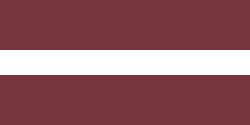Kurland
Kurland (lettisk: Kurzeme; latin: Curonia; tysk: Kurland; litauisk: Kuršas; russisk: Курляндия) er en af de historisk-kulturelle regioner i Letland. Regionerne Semgallen og Sēlija betragtes undertiden som en del af Kurland, idet de tidligere var underlagt den samme hertug.
Kurland beboedes i den tidlige middelalder af kurere eller kurlændinge der talte oldkurisk, et østbaltisk sprog. Kurland hørte under Den Tyske Orden i staten Livland (ca. 1200–1560), Den polsk-litauiske realunion (1560–1795) og Det Russiske Kejserrige (1795–1918).
Se også
| |||||||||||||||||||||||||||||||||||||
| Spire Denne artikel relateret til Letland er en spire som bør udbygges. Du er velkommen til at hjælpe Wikipedia ved at udvide den. |
| Spire |
|
Koordinater: 57°N 22°Ø / 57°N 22°Ø
Medier brugt på denne side
A woodcut of Latvia's capital Riga, dating from a 1575 French edition of Sebastian Münster's encyclopedic work, the Cosmographia Universalis. This woodcut (1547) was first published in Cosmographia reissue in 1550. The author of this woodcut, Hans Johann Hasentöter, has also written an article about Livonia and translated Lord's Prayer to Latvian - both were included in 1550 issue of Cosmographia.
Storfyrst Vytautas den Store af Litauens segl, 1407.
Forfatter/Opretter: , Licens: CC BY-SA 3.0
A map of the Baltic Tribes, about 1200 AD. The Eastern Balts are shown in brown hues while the Western Balts are shown in green. The boundaries are approximate. This map uses a Mercator projection.








